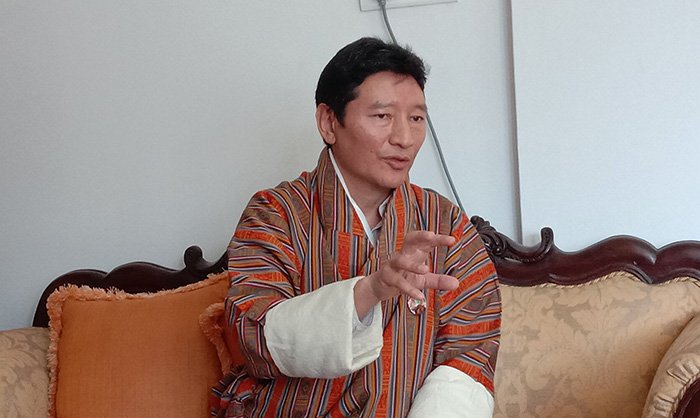TVET team with CEO takes over reforms
Choki Wangmo
In what is a major leap in reforming the Technical and Vocational Education and Training (TVET), a transition team was officially formed yesterday under a new chief executive officer (CEO).
Led by CEO Kinga Tshering, the former parliamentarian from North Thimphu, the transition team would work towards the formation of an autonomous TVET agency.
To start with, the team will carry out consultation works and research studies to reform the TVET sector, which for decades had failed to live up to the expectations of the government and people.
This is expected to change. Kinga Tshering said that TVET reforms will be the main economic driver of the 21st century economy plan in Bhutan.
He said that an important component the team would work on is how the current TVET system could be improved so that the sector is prepared to accommodate about 4,000 young children when they complete their Gyalsung programme in 2022.
The team is looking into harnessing the country’s demographic dividend to create a system where youth are equipped with 21st century skills such as digital technology and data analytics.
For Bhutan, the demographic dividend opportunity starts from 2022 with His Majesty’s Gyalsung initiative.
Demographic dividend is when there is a boost in economic productivity due to growing numbers of people in the workforce relative to the number of dependents. A country with both increasing numbers of young people and declining fertility has the potential to reap a demographic dividend.
In 2022, Bhutan will have a maximum number of young people below 25 years, which is timely to reap the benefits through TVET sector, Kinga Tshering said.
TVET sector in the country had failed to meet the standard and the purpose it was established for some five decades ago— delivering quality workmanship and attracting more youth to pursue various trainings.
The government pursued TVET reforms since last year with two expert working groups on the new curriculum for skills and competency relevant to 21st century and ensuring governance structure of the revised system.
The reforms, according to Kinga Tshering should look at how the TVET opportunities could be expanded. For instance, he said that in the construction sector, skilled young Bhutanese could be employed in the sector which would reduce spending on foreign nationals. That is where the role of TVET comes in – to upscale skills of young children to match the job market.
The current COVID-19 outbreak is a good opportunity to reform and fill in the gaps in the construction sector by Bhutanese workers while the foreign workers are stranded due to travel restrictions on foreigners, he added.
However, some of the construction owners Kuensel talked to said that the Bhutanese workers didn’t have the required skills. TVET sector could have filled in the gaps.
Prime Minister Dr Lotay Tshering said that in a globalised world, Bhutan should not train her youth for Bhutanese job market but for the global market.”
Lyonchhen said that the TVET graduates were associated with ‘blue-collared’, jobs, hence there were no takers. They are also constrained by the limited opportunity to upgrade educational qualification and career progression. “Labour force requires skills, honour and respect.”
The TVET reform team would work on new opportunities for TVET graduates so that they can have reasonable source of income. “We need to impress parents and children through opportunities to get skilled and get good salary,” Kinga Tshering said.
TVET curriculum will also change according to needs of the market. Kinga Tshering said the current training were theoretical. The reform would teach skills required in the global job market.
The trainee shouldn’t be trained as a professional plumber and then work in an automobile workshop, which currently is the trend, he added.
Once the service conditions, legal framework and Standard Operating Procedures are ready, TVET sector will be delinked from the labour ministry.
There are less than 1,000 students in the vocational training centres across the country. About 15,000 high school graduates join colleges. Statistics have shown that the number of unemployed graduates is higher by 40-50 percent.


